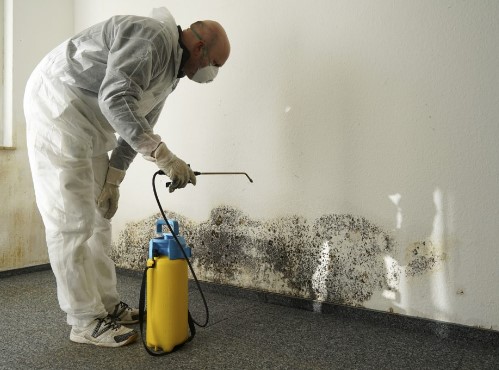If you’ve ever noticed a musty smell lingering in your home or come across suspicious-looking spots on your walls, you might want to consider the importance of mold inspections. In a coastal city like Huntington Beach, where moisture levels can be higher, being proactive about mold detection is crucial.
But how exactly can you ensure that you’re accessing reliable mold inspection services in this area? Let’s explore the steps you need to take to safeguard your home and health.
Comparison of Mold Inspection Services
When comparing mold inspection services, prioritize assessing the qualifications and experience of the inspectors to ensure a thorough evaluation of your property’s mold issues. Look for inspectors who are certified by reputable organizations such as the IICRC (Institute of Inspection, Cleaning and Restoration Certification) or NORMI (National Organization of Remediators and Mold Inspectors). These certifications indicate that the inspectors have undergone training and adhere to industry standards, increasing the likelihood of a comprehensive inspection.
Consider the technology and tools used by different services. Advanced equipment such as infrared cameras, moisture meters, and air quality testing devices can enhance the accuracy of the inspection process. Additionally, inquire about the procedures followed during the inspection and the comprehensiveness of the reports provided afterward. A detailed report with findings, recommendations, and next steps can guide you in addressing any mold issues effectively.
Furthermore, compare pricing structures and included services. While cost is important, ensure that you prioritize quality and thoroughness in the inspection process to effectively address any mold problems in your property.
Finding Local Mold Inspection Companies
When seeking local mold inspection companies in Huntington Beach, your first step should be to conduct thorough research to ensure you find a reputable and experienced service provider. Look for companies that specialize in mold testing and mold remediation, as these are crucial aspects of the inspection process. Start by checking online reviews, asking for recommendations from friends or family, and verifying the company’s credentials and certifications. Local directories or websites dedicated to home services can also be valuable resources in finding reliable mold inspection companies.
Once you have compiled a list of potential companies, contact them to inquire about their services, pricing, and availability. It’s essential to ask about their experience in the field, the methods they use for mold testing, and their process for mold remediation if issues are found. A reputable company will be transparent about their procedures and provide you with detailed information to help you make an informed decision. By taking the time to research and ask the right questions, you can find a trustworthy mold inspection company in Huntington Beach that meets your needs.
Booking a Mold Inspection Appointment
Having identified reputable mold inspection companies in Huntington Beach, your next critical step is securing a mold inspection appointment to address any potential issues promptly.
The scheduling process for a mold inspection is typically straightforward. Contact the chosen mold inspection company either by phone or through their website to inquire about appointment availability. Most companies offer flexible scheduling options to accommodate your needs. During this initial contact, you can also inquire about the inspection cost.
The cost of a mold inspection in Huntington Beach can vary depending on the size of the property, the extent of the inspection required, and any additional services you may need. It’s essential to have a clear understanding of the inspection cost upfront to avoid any surprises.
Once you have confirmed the appointment date and time that works for you, make sure to prepare the property for the inspection by ensuring access to all areas that need to be assessed.
Understanding the Mold Inspection Process
Prepare yourself for a detailed insight into the intricate process of assessing potential mold issues within your property.
Mold inspection typically involves a thorough examination of your property to identify any areas affected by mold growth. The process begins with a visual inspection, where a trained professional will look for visible signs of mold, such as discoloration or water damage. Following this, mold testing may be conducted to determine the type and concentration of mold present in the environment. This testing may involve air sampling, surface sampling, or both, to provide a comprehensive assessment of the mold situation.
In addition to mold testing, moisture detection is a critical component of the inspection process. Mold thrives in damp environments, so identifying sources of moisture is essential for effective mold remediation. Professionals may use specialized tools like moisture meters and thermal imaging cameras to detect hidden moisture sources behind walls or under flooring.
Understanding the mold inspection process is key to addressing mold issues promptly and effectively, safeguarding your property and the health of its occupants.
Evaluating Mold Inspection Reports
To effectively assess the findings and implications of mold inspection reports, understanding key elements and terminology is crucial. When interpreting findings, pay close attention to the types of mold identified, their spore counts, and the locations where mold growth was detected.
The report should detail the extent of the mold contamination, indicating whether it’s localized or widespread throughout the property. Furthermore, look for information regarding moisture sources that are contributing to the mold growth, as addressing these is essential for effective remediation.
Remediation recommendations outlined in the report will guide you on the necessary steps to eliminate the mold problem. These recommendations may include moisture control measures, the removal of affected materials, and the use of biocides or encapsulants where appropriate.
Understanding and acting upon the information provided in the mold inspection report is crucial for ensuring a successful mold remediation process and maintaining a healthy indoor environment.

